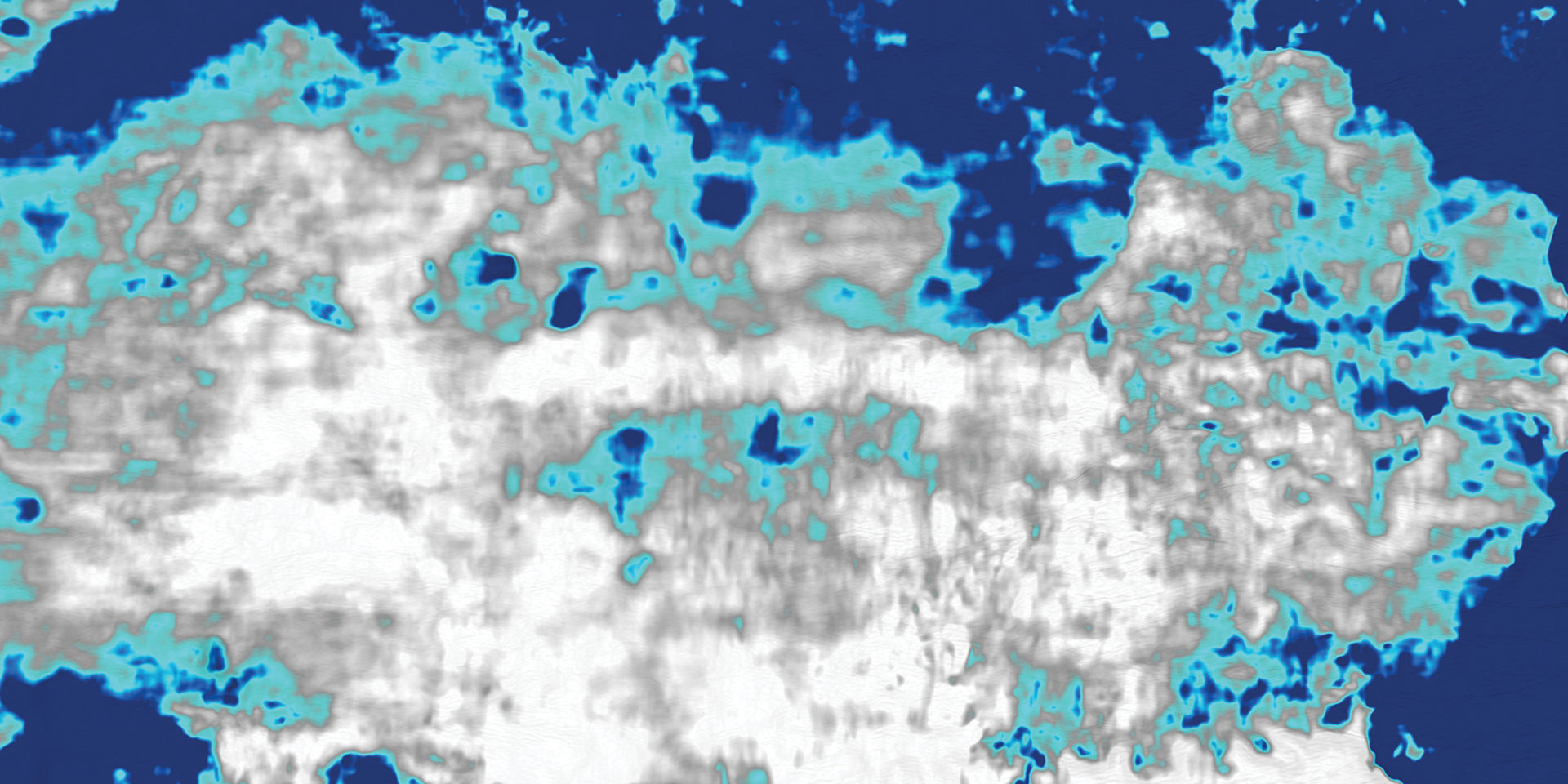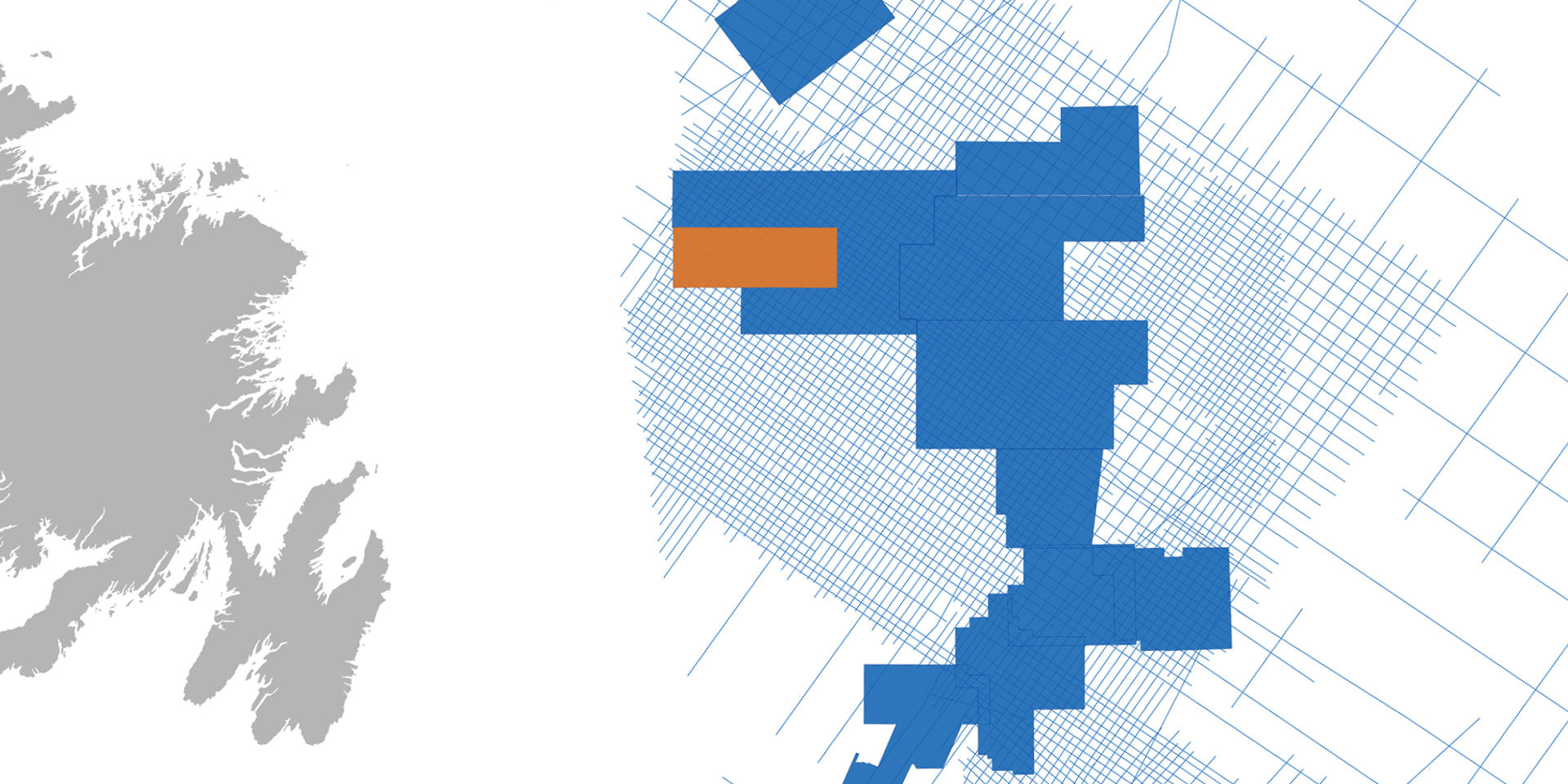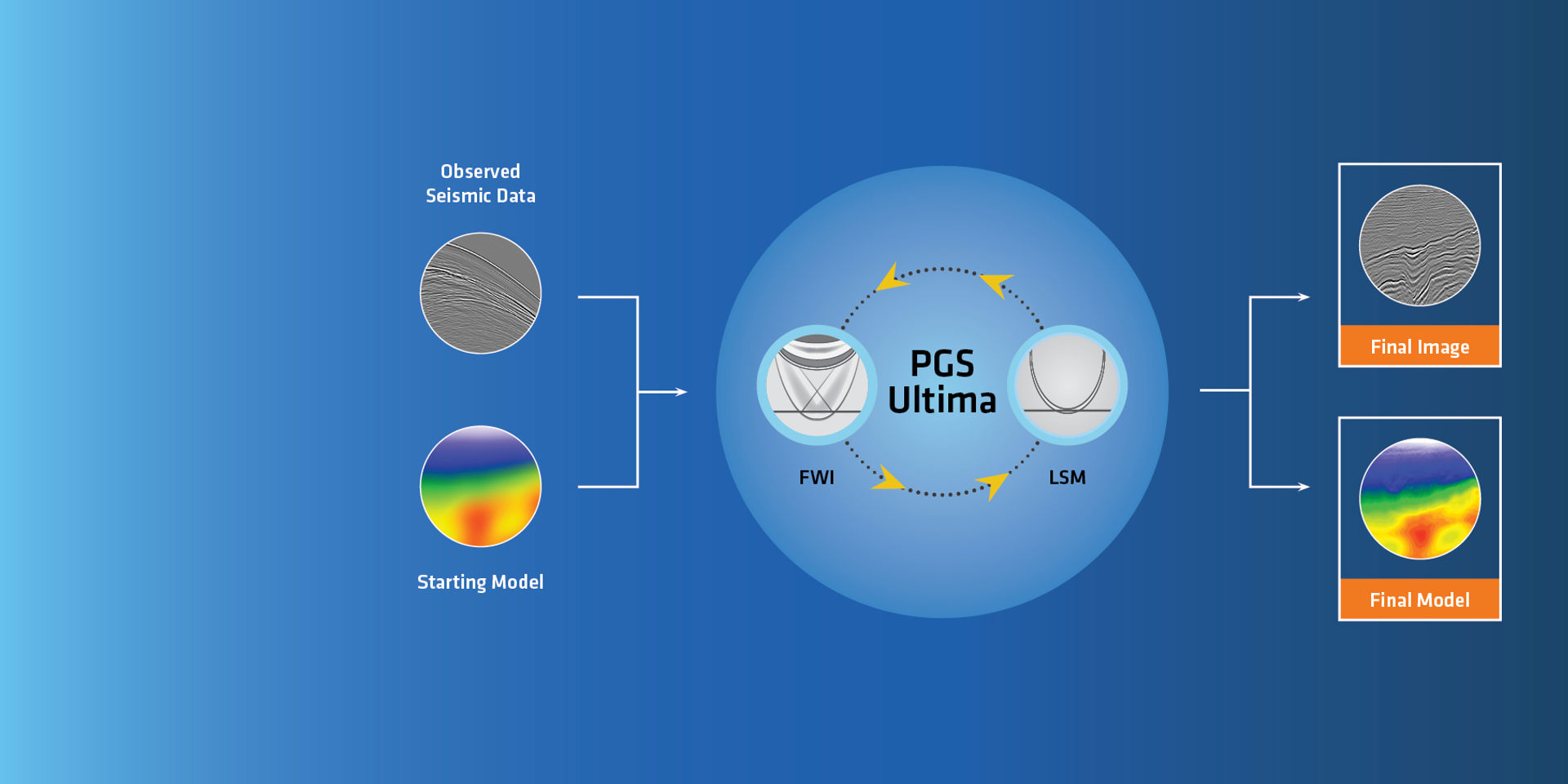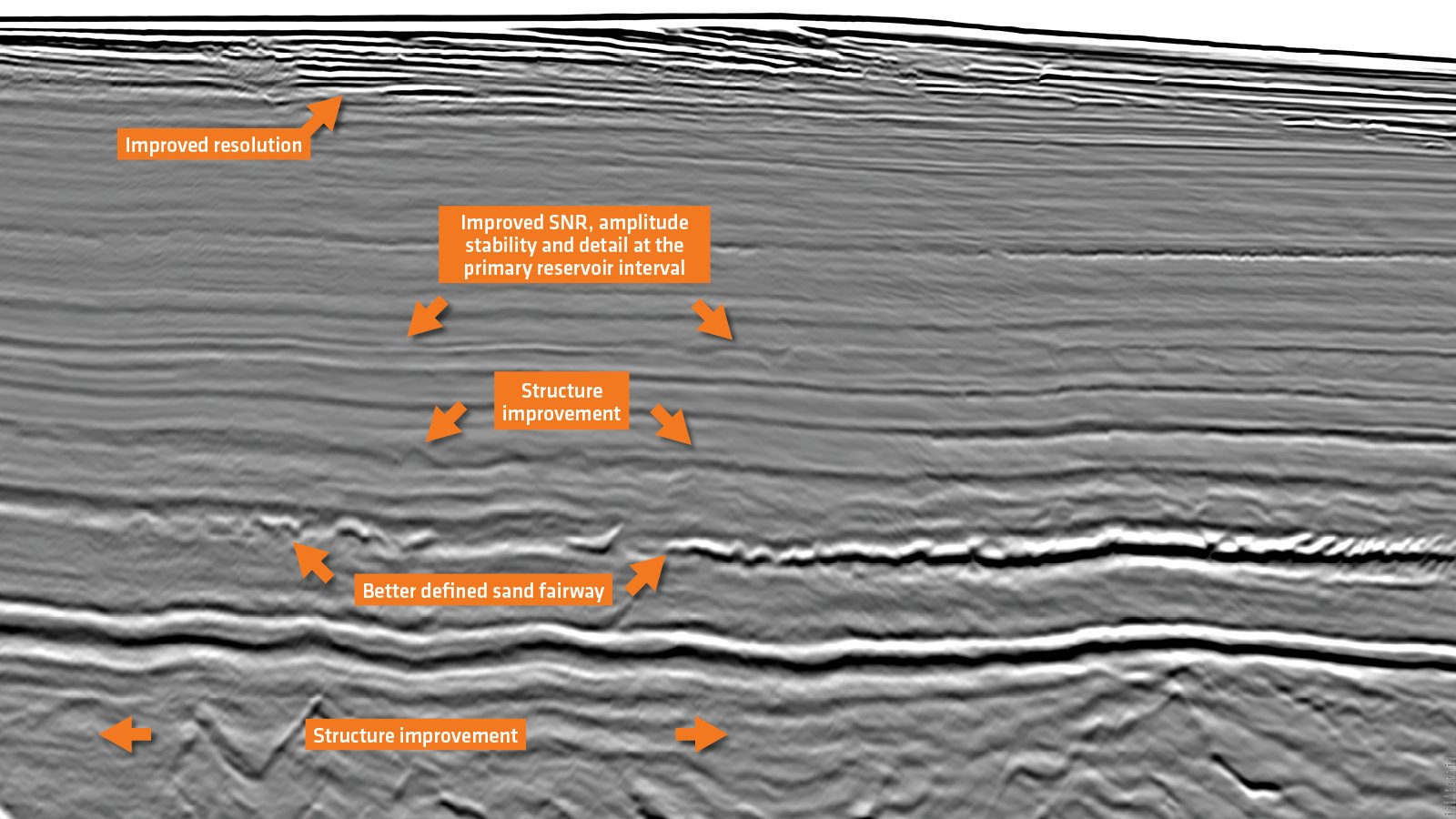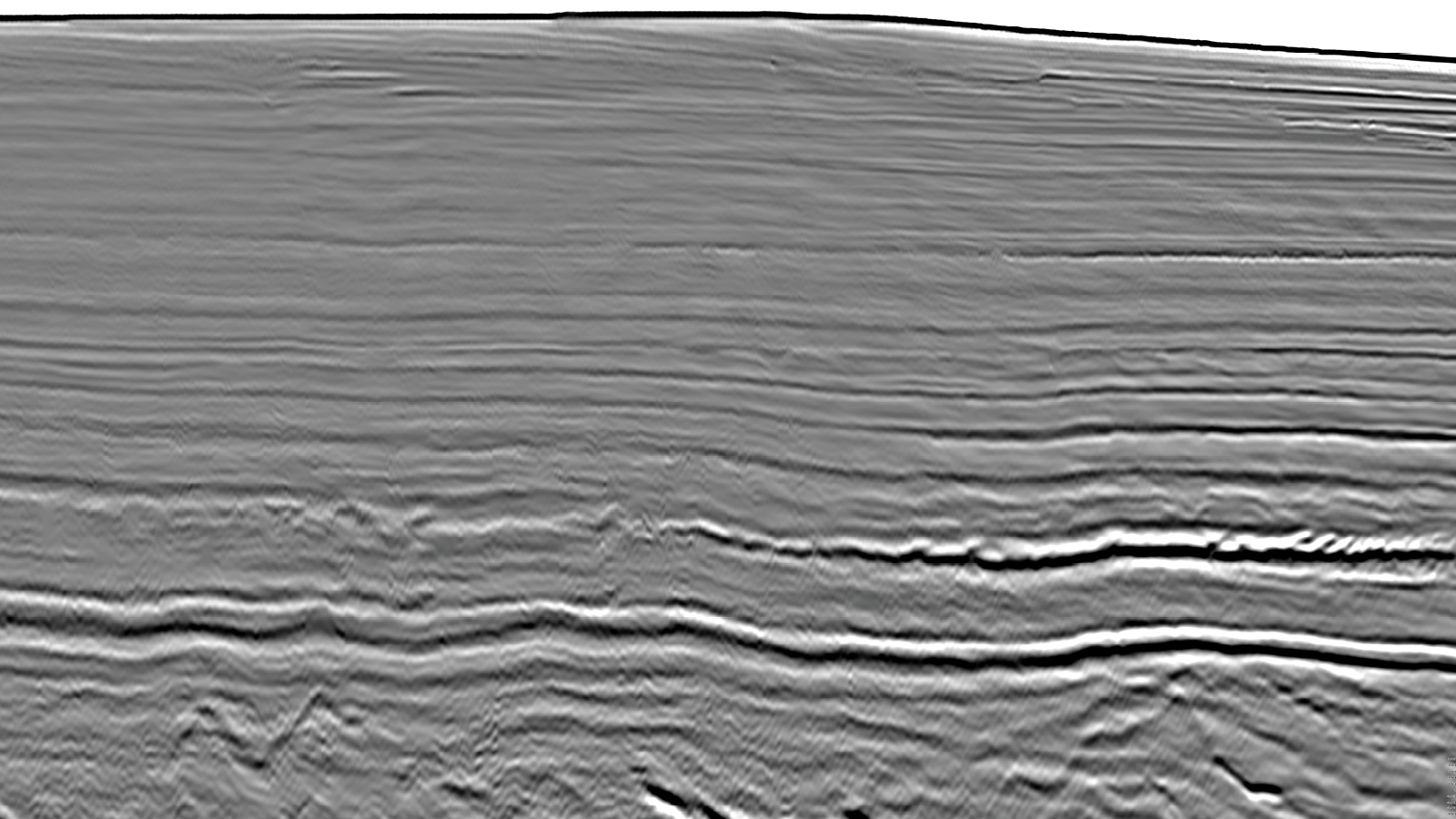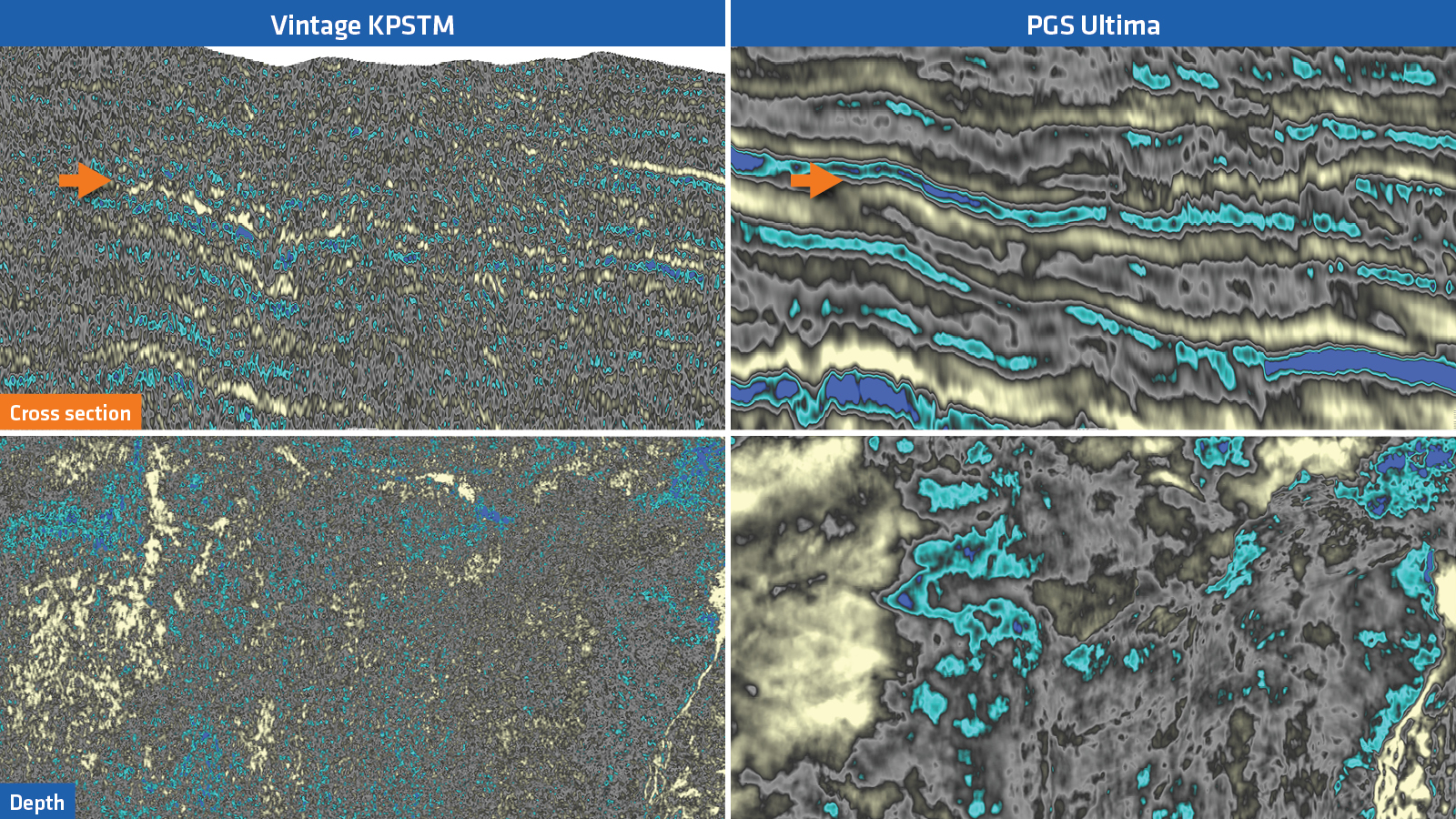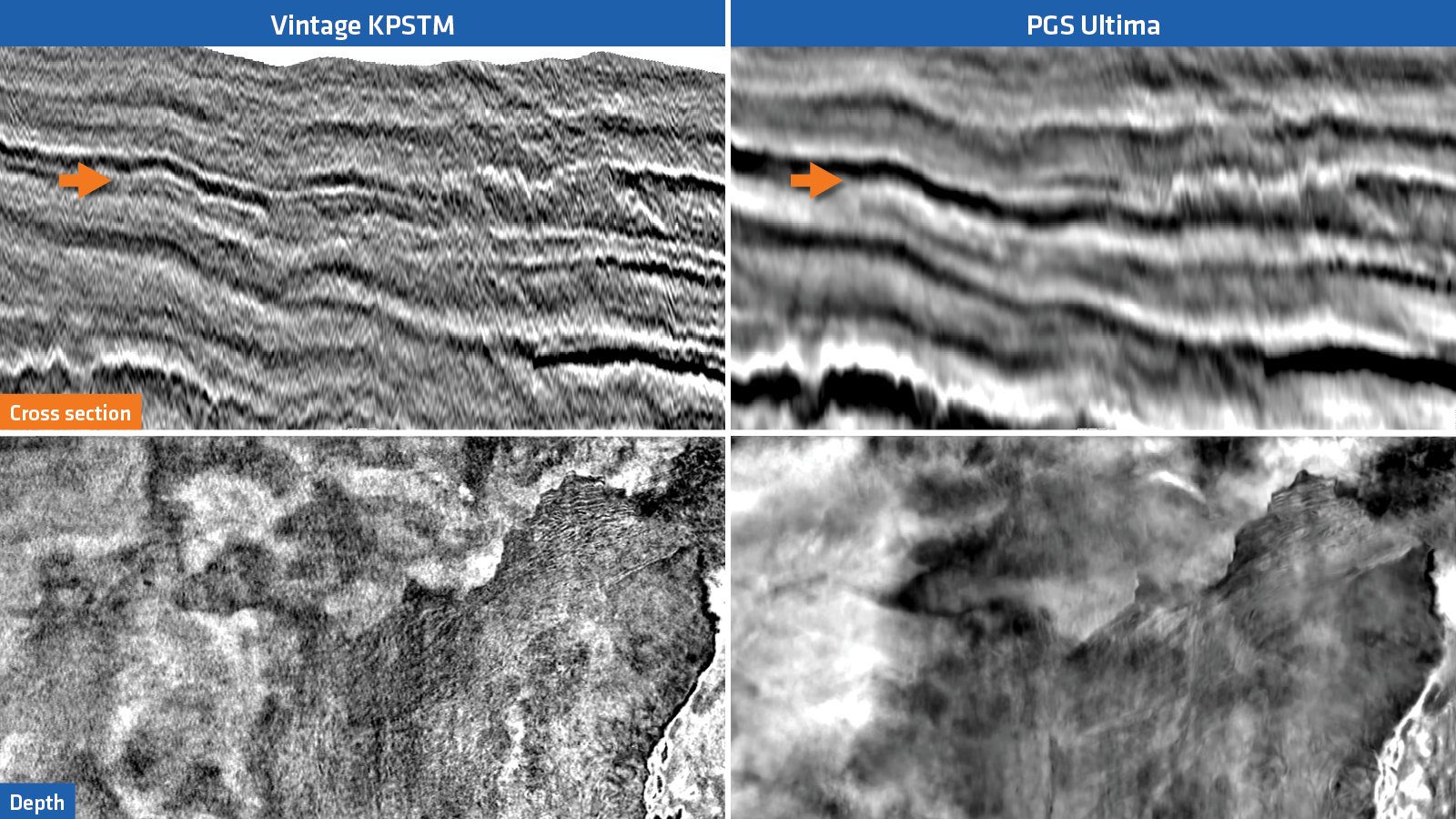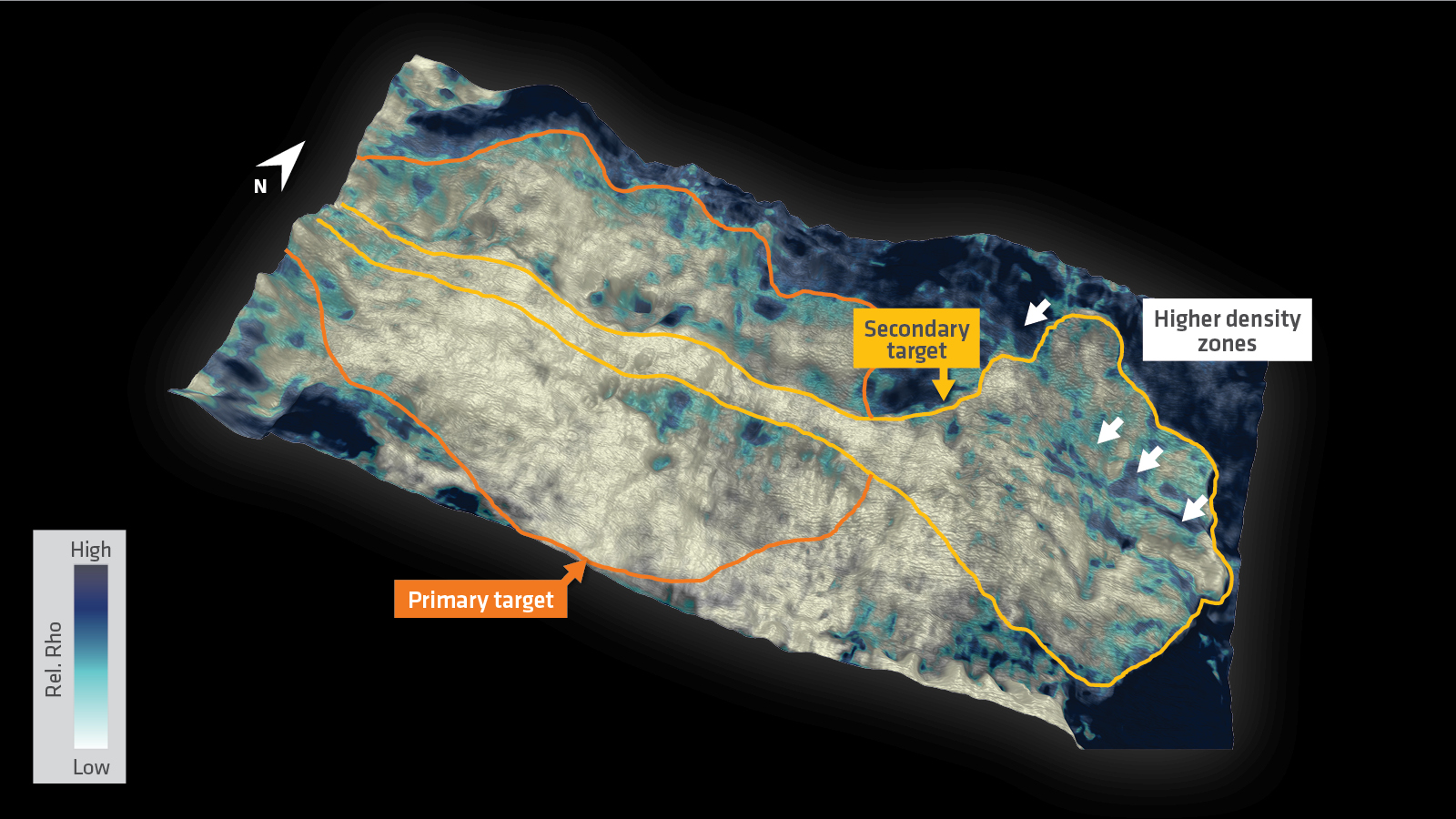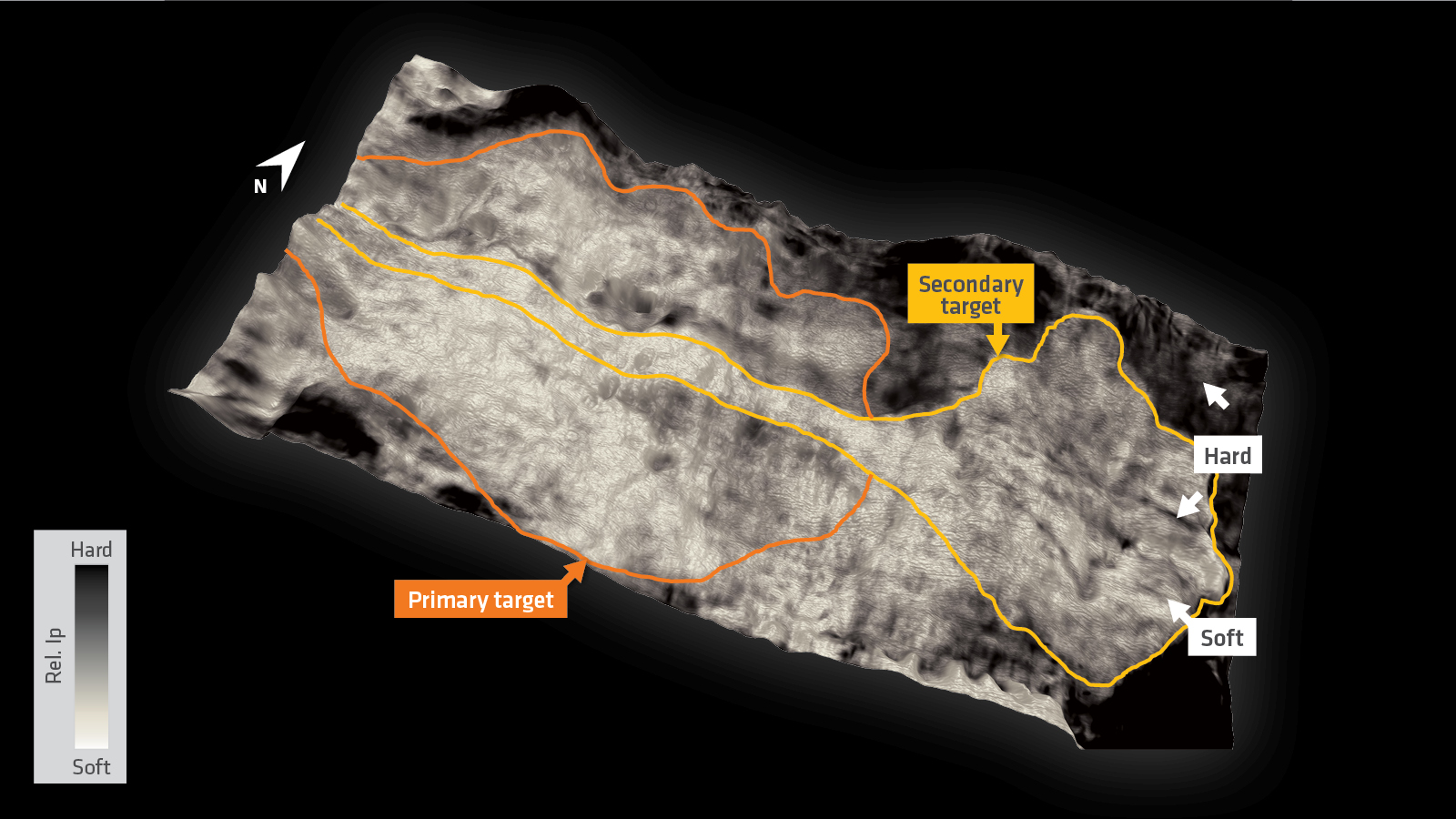Challenge
Large-scale Paleogene marine fan systems align along the shelf margin off the northeast coast of Newfoundland. The shallow water, multiples and velocity contrasts in the upper section are the main challenges for derisking the main lead (yellow ellipse). The uplift from PGS Ultima improves the understanding of such prospects within the Blomidon survey.
